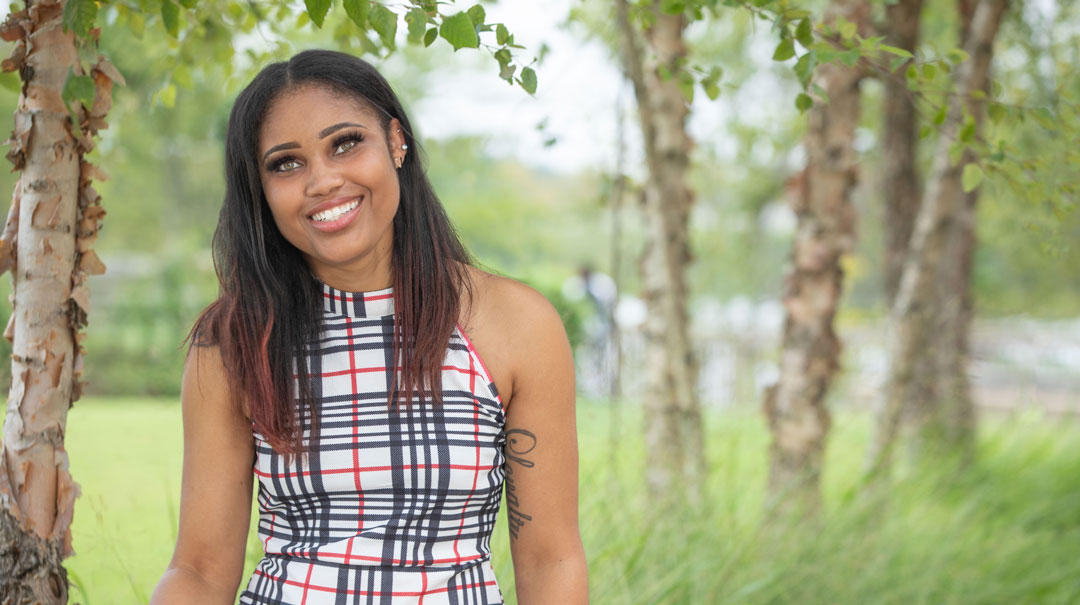Find care now
If you are experiencing a medical emergency, please call 911 or seek care at an emergency room.

Life was bliss for 25-year-old Tyquela Able. It was 2015 and she was loving motherhood and her new baby boy, Kimahni. But when her son was nine months old, Ms. Able was feeling fatigue that wasn’t simply the normal tiredness that comes from parenting an infant.
“I couldn’t go three steps up the stairs without feeling out of breath,” she says. Then she lost her appetite. After visits to urgent care, the local hospital, her primary care physician and a battery of tests, diagnoses ran from gallbladder disease to pneumonia. Ultimately, she was sent to MedStar Washington Hospital Center.
“Then everything happened so fast,” she recalls. “I had a series of tests including an echocardiogram, which showed that the left ventricle of my heart wasn’t pumping correctly.” Ms. Able was not getting adequate oxygenated blood to her body—her heart was failing.
“I was really shocked!” she says. But Ms. Able—a born optimist—thought “things could always be worse.” With her faith and her family, she felt all would be ok.
“They first tried a defibrillator to see if that would help, but it didn’t,” she says. “That’s when the doctors told me I needed an LVAD [left ventricular assist device] to serve as a bridge to heart transplantation.”
“I had my battery put in a fanny pack in a fashionable color. It was just when fanny packs were coming back in style!” she says.
Then Ms. Able went on with her life. A call came a little over two years later: A heart was available. Sadly, the organ proved to be diseased. So, Ms. Able’s agonizing wait continued.
“Then I got a call this past April. It was 7:30 p.m. and we were watching a movie. We ignored the ringing at first because it was an unfamiliar number. Finally, my Mom answered it. There was a heart for me, and they asked if I wanted it, and of course, I did.”
“COVID was not on my mind,” she says. “I trust the transplant team. I trust my surgeon, Dr. Molina. When I told my son that mommy was getting her heart, he was so excited he wanted to kiss my chest.”
Her mother and Ms. Able’s fiancé, John Lloyd, drove her to the hospital and had to leave her because of restrictions on visitors. “But it wasn’t too bad,” she says. “After three days in intensive care, we used FaceTime® and ZOOM. I was up and walking as soon as possible. They wanted me safely out of the hospital quickly because of COVID. And I was motivated to get home as soon as I could, too.”
Just two weeks later Ms. Able was discharged. “I feel pretty good,” she says. Good enough to be walking up to five miles and to complete the last chapters of the book she is writing. “It’s my story with devotionals to help people going through the same experience,” she says. “I understand that dealing with heart failure and facing transplant can be overwhelming, and I’m happy to be able to help.”
What Is an LVAD?
A left ventricular assist device, or LVAD, is a mechanical pump implanted inside the chest to help a weakened heart pump blood. The LVAD doesn’t replace the heart, but just helps it do its job. LVADs can mean the difference between life and death for those waiting for a heart transplant and are often called a “bridge to transplant.”














